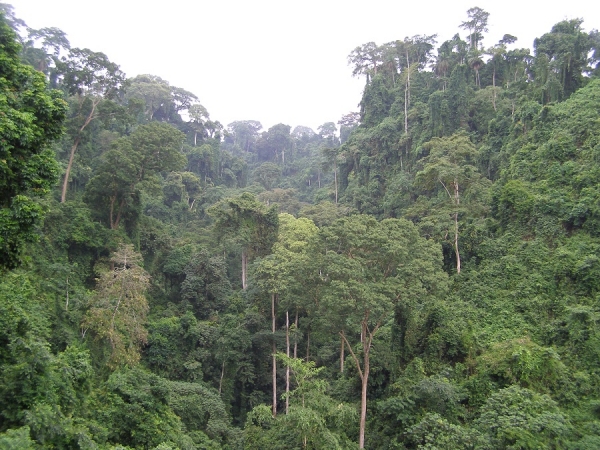In the Eocene, some of the world’s most important mountain ranges emerged and large climate changes took place that affected the future of the planet. In this era, about 50 million years ago, large groups of mammals and other animals also came , as did Daniellia clade, an array of legume plants which carry environmental relevance.
This is one of the main conclusions of a research project on which the University of Cordoba collaborated. This project places the origins of these trees in North Africa. As the only Spanish researcher on the study, Manuel de la Estrella, pointed out, this kind of legume boasts interest from the scientific community due to systematic and environmental reasons. Though most grow in humid rainforests, some have been able to adapt to dry areas that are completely different, such as savannahs and hearty forests of Madagascar, known for their emblematic baobabs. What is more, in contrast to what happens with other tropical plants, the diversity of these species is greater in Africa than in other tropical regions of Asia or the Americas.
The study, that was tracking these plants from the beginning, unlocked some of the mysteries about the plant group’s distribution and diversity. As the research shows, this group emerged in North Africa when tropical rainforests flooded the northern part of the continent and even Europe, with the Paris basin being the location where the oldest fossil of this group was found. The emergence of a drier climate afforded a new lineage that spread to Madagascar, where nowadays species adapted to little rainfall grow. Several climate changes that occurred later brought about diversifications that led to the 10 species described in Africa.
In order to trace this evolution, explains Manuel de la Estrella, the fossil record was studied and they used a dating technique known as “molecular clock”, a phylogenetic method that deduces the timeline of events using DNA sequences from different species.
Endangered species
The study also assessed the state of conservation of these legumes in accordance with IUCN categories with the aim of establishing conservation priorities. Even if these trees have demonstrated their enormous ability to adapt for 50 million years, eight of the fourteen species in Africa and Madagascar are currently endangered, due to climate change, among other reasons. “Although many of these species arose precisely as a consequence of previous climate changes, those changes happened gradually over millions of years, and so they were given time to adapt”, explains the sole Spanish author of the article.
Furthermore, overexploitation by mankind is another main factor threatening the future of these species. Deforestation and dependence upon wood for use in construction and as fuel exerts heavy pressure, especially in areas in the savannah where trees are few and far between.
This research, says Manuel de la Estrella “allows us to understand how these plants emerged and understand how threatened their diversity is, which will help us to make better decisions”. Conservation measures such as storing seeds and reintroducing genetically diverse plants in appropriate, protected habitats could help to guarantee the long-term survival of these species.
References:
Choo L.M., Forest F., Wieringa J.J., Bruneau A., de la Estrella M. Phylogeny and biogeography of the Daniellia clade (Leguminosae: Detarioideae), a tropical tree lineage largely threatened in Africa and Madagascar. Molecular Phylogenetics and Evolution. Volume 146, May 2020, 106752 DOI: 10.1016/j.ympev.2020.106752


